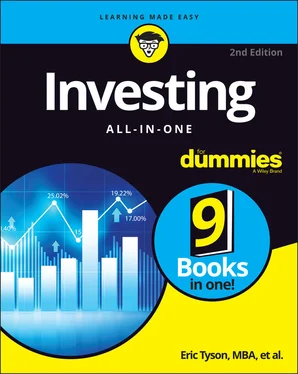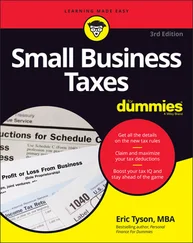The best of brokerage firm asset management accounts typically enable you to
Invest in various investments, such as stocks, bonds, mutual funds, and exchange-traded funds, and hold those investments in a single account.
Write checks against a money market balance that pays competitive yields.
Use a Visa or Mastercard debit card for transactions.
Money market mutual funds
Because bank savings accounts historically have paid pretty crummy interest rates, you need to think long and hard about keeping your spare cash in the bank during normal times for interest rates and the economy. Instead of relying on the bank, try keeping your extra savings in a money market fund, which is a type of mutual fund. (Other funds focus on bonds or stocks.) Money market funds historically have offered a higher-yielding alternative to bank savings and bank money market deposit accounts. You can use a money market fund that offers unlimited check writing at a mutual fund company.
During recent periods of ultra-low interest rates, you may find slightly better interest rates on some of the best online bank savings accounts and at some credit unions.
A money market fund is similar to a bank savings account except that it is offered by a mutual fund company and therefore lacks FDIC coverage. Historically, this hasn’t been a problem because retail money market funds have lost shareholder principal in only one case for retail investors (the Reserve Primary fund lost less than 1 percent of assets during the 2008 financial crisis).
The attraction of money market funds has been that the best ones pay higher yields than bank savings accounts and also come in tax-free versions, which is good for higher-tax-bracket investors.
Book 3
Checking Out Stock Investing
Contents at a Glance
1 Chapter 1: Gathering Information on Stocks Looking to Stock Exchanges for Answers Grasping the Basics of Accounting and Economics Staying on Top of Financial News Reading (And Understanding) Stock Tables Using News about Dividends Evaluating Investment Tips
2 Chapter 2: Investing for Long-Term Growth Becoming a Value-Oriented Growth Investor Choosing Growth Stocks with a Few Handy Tips
3 Chapter 3: Investing for Income and Cash Flow Understanding the Basics of Income Stocks Analyzing Income Stocks Exploring Some Typical Income Stocks
4 Chapter 4: Using Basic Accounting to Choose Winning Stocks Recognizing Value When You See It Accounting for Value
Chapter 1
Gathering Information on Stocks
IN THIS CHAPTER
 Using stock exchanges to get investment information
Using stock exchanges to get investment information
 Applying accounting and economic know-how to your investments
Applying accounting and economic know-how to your investments
 Keeping abreast of financial news
Keeping abreast of financial news
 Deciphering stock tables
Deciphering stock tables
 Understanding dividend dates
Understanding dividend dates
 Recognizing good (and bad) investing advice
Recognizing good (and bad) investing advice
Knowledge and information are two critical success factors in stock investing. (Isn’t that true about most things in life?) People who plunge headlong into stocks without sufficient knowledge of the stock market in general, and current information in particular, quickly learn the lesson of the eager diver who didn’t find out ahead of time that the pool was only an inch deep (ouch!). In their haste to avoid missing so-called golden investment opportunities, investors too often end up losing money.
 Opportunities to make money in the stock market will always be there, no matter how well or how poorly the economy and the market are performing in general. There’s no such thing as a single (and fleeting) magical moment, so don’t feel that if you let an opportunity pass you by, you’ll always regret that you missed your one big chance.
Opportunities to make money in the stock market will always be there, no matter how well or how poorly the economy and the market are performing in general. There’s no such thing as a single (and fleeting) magical moment, so don’t feel that if you let an opportunity pass you by, you’ll always regret that you missed your one big chance.
For the best approach to stock investing, build your knowledge and find quality information first so you can make your fortunes more assuredly. Before you buy, you need to know that the company you’re investing in is
Financially sound and growing
Offering products and/or services that are in demand by consumers
In a strong and growing industry (and general economy)
Where do you start, and what kind of information do you want to acquire? Keep reading.
Looking to Stock Exchanges for Answers
Before you invest in stocks, you need to be completely familiar with the basics of stock investing. At its most fundamental, stock investing is about using your money to buy a piece of a company that will give you value in the form of appreciation or income (or both). Fortunately, many resources are available to help you find out about stock investing. Some of the best places are the stock exchanges themselves.
Stock exchanges are organized marketplaces for the buying and selling of stocks (and other securities). The New York Stock Exchange (NYSE; also referred to as the Big Board ), the premier stock exchange, provides a framework for stock buyers and sellers to make their transactions. The NYSE makes money not only from a cut of every transaction but also from fees (such as listing fees) charged to companies and brokers that are members of its exchanges. In 2007, the NYSE merged with Euronext, a major European exchange, but no material differences exist for stock investors. In 2008, the American Stock Exchange (Amex) was taken over by (and completely merged into) the NYSE. The new name is NYSE American.
 The main exchanges for most stock investors are the NYSE (
The main exchanges for most stock investors are the NYSE ( www.nyse.com ) and Nasdaq ( www.nasdaq.com ). Technically, Nasdaq isn’t an exchange, but it’s a formal market that effectively acts as an exchange. Because the NYSE and Nasdaq benefit from increased popularity of stock investing and continued demand for stocks, they offer a wealth of free (or low-cost) resources and information for stock investors. Go to their websites to find useful resources such as the following:
Tutorials on how to invest in stocks, common investment strategies, and so on
Glossaries and free information to help you understand the language, practice, and purpose of stock investing
A wealth of news, press releases, financial data, and other information about companies listed on the exchange or market, usually accessed through an on-site search engine
Industry analysis and news
Stock quotes and other market information related to the daily market movements of stocks, including data such as volume, new highs, new lows, and so on
Free tracking of your stock selections (you can input a sample portfolio or the stocks you’re following to see how well you’re doing)
Читать дальше

 Using stock exchanges to get investment information
Using stock exchanges to get investment information Opportunities to make money in the stock market will always be there, no matter how well or how poorly the economy and the market are performing in general. There’s no such thing as a single (and fleeting) magical moment, so don’t feel that if you let an opportunity pass you by, you’ll always regret that you missed your one big chance.
Opportunities to make money in the stock market will always be there, no matter how well or how poorly the economy and the market are performing in general. There’s no such thing as a single (and fleeting) magical moment, so don’t feel that if you let an opportunity pass you by, you’ll always regret that you missed your one big chance. The main exchanges for most stock investors are the NYSE (
The main exchanges for most stock investors are the NYSE ( 










